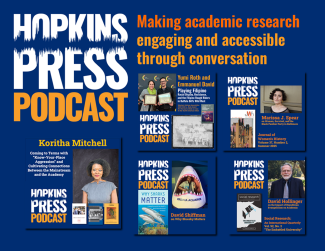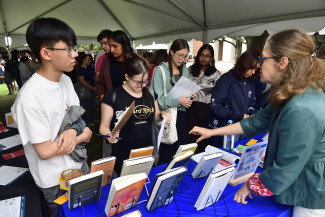
Johns Hopkins UniversityEst. 1876
America’s First Research University
A Q&A with Stephen Gavazzi: Author of Land-Grant Universities for the Future

What is the book about?
Most simply, it’s about the past, present, and possible futures of the land-grant university in twenty-first century America.
So why write a book about land-grant universities now?
My co-author and I, West Virginia University president Gordon Gee, both felt strongly that certain core aspects of the land-grant mission were being threatened by a variety of pressures placed upon higher education today. As a result, we both believed that these institutions were at significant risk of losing portions of their core identity. It dismayed us to think that the historical roots of America’s first public universities were being forgotten, or at least downplayed. Among other things, land-grant universities were intended to provide access to a practical college degree that was affordable to the working classes, generate research to help solve pressing problems, and remain closely connected to the needs of the communities they were designed to serve.
In short, they were founded as the people’s universities. So, we decided to conduct a study to find out what the leaders of these universities were thinking about when it came to the twenty-first century application of the land-grant mission.
How was this study conducted?
To kick off our efforts, President Gee co-wrote a letter with Ohio State University president Michael Drake that invited land-grant university presidents and chancellors to participate in an interview that sought to identify the strengths, weaknesses, opportunities, and threats faced by land-grant universities at present. Incredibly, more than half of these senior leaders immediately signed up to participate, and then took significant amounts of time out of their extremely busy lives to talk with us about their observations and beliefs. While the interviews were designed to follow a structured set of questions, we followed the presidents and chancellors wherever they wanted to go in terms of discussion points.
What did these university leaders say?
The participating presidents and chancellors were a very diverse group in terms of their professional backgrounds and areas of academic expertise, and this was reflected in the personal beliefs they shared about their specific universities and the public higher education system more generally. That said, there were seven themes that emerged from our data analyses. Because of the range of opinions about each theme, however, we decided to state each theme as a dialectic, thus representing two polar sides of each issue.
The first of these themes surfaced worries about continued funding declines from the state versus the need to create efficiencies within the university as a business enterprise. A second theme focused on the quest for research excellence in comparison to the advancement of excellence in teaching and service to the community. The third theme examined knowledge for knowledge’s sake versus a more practical focus; that is, basic research versus applied research. The fourth of these themes compared the focus on national rankings against an emphasis on providing an accessible and affordable college education for all qualified students. Fifth, activities designed to meet the needs of rural communities were juxtaposed against efforts to meet the needs of a more urbanized America. The sixth theme examined the global reach of universities versus their impact more “closer to home.” The seventh and final theme weighed the overall benefits of higher education versus the devaluation of a college diploma in the public arena.

Are there action steps that emerge from these themes?
Yes, action steps emerged as we ran these themes by a variety of community stakeholders, including higher education thought leaders, elected state officials, policy-makers, governing board members, and higher education accreditors. Overall, there was a great deal of support for the idea that land-grant universities should return to their roots. This translates best as an emphasis on the delivery of an affordable higher education experience that will be made readily available to those students who can least afford it and whose lives will be most positively impacted by the attainment of a college diploma. There also is a clamoring for faculty members who display as much excellence in the classroom and in service to the community as they do in their research labs. And when these faculty are working on an international level, stakeholders want to be told how those activities also are making a difference in the everyday lives of the citizens who are helping to fund those efforts.
Stephen M. Gavazzi is a professor of human development and family science at The Ohio State University. He is the author of Families with Adolescents: Bridging the Gaps between Theory, Research, and Practice. E. Gordon Gee is the president of West Virginia University. He is the coauthor of Law, Policy, and Higher Education and coeditor of Leading Colleges and Universities: Lessons from Higher Education Leaders. Most recently they are the authors of Land-Grant Universities for the Future: Higher Education for the Public Good.


